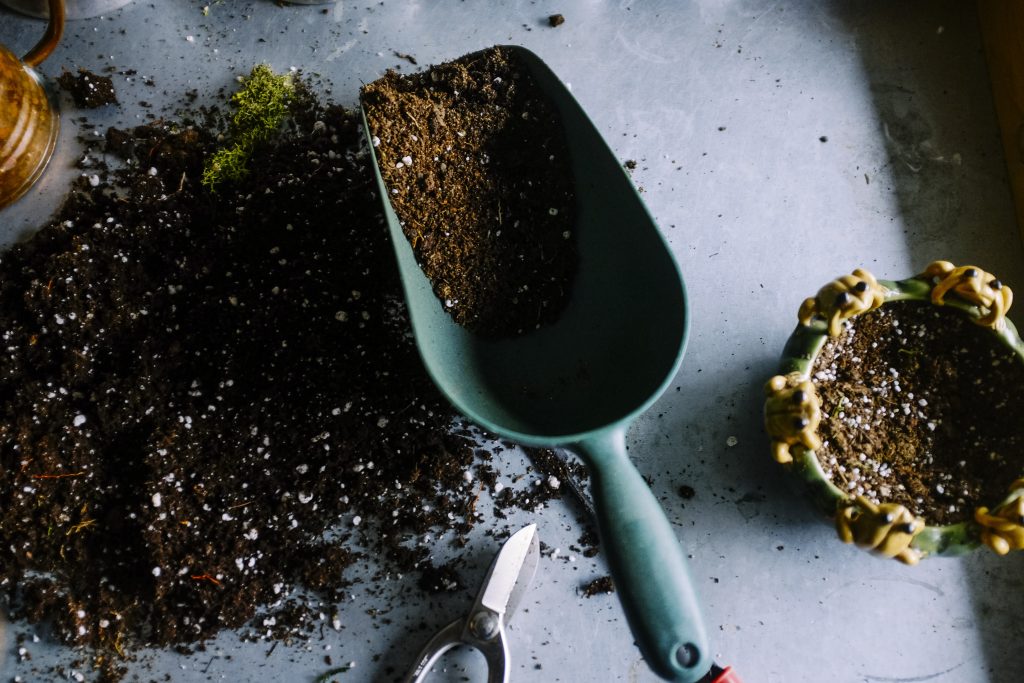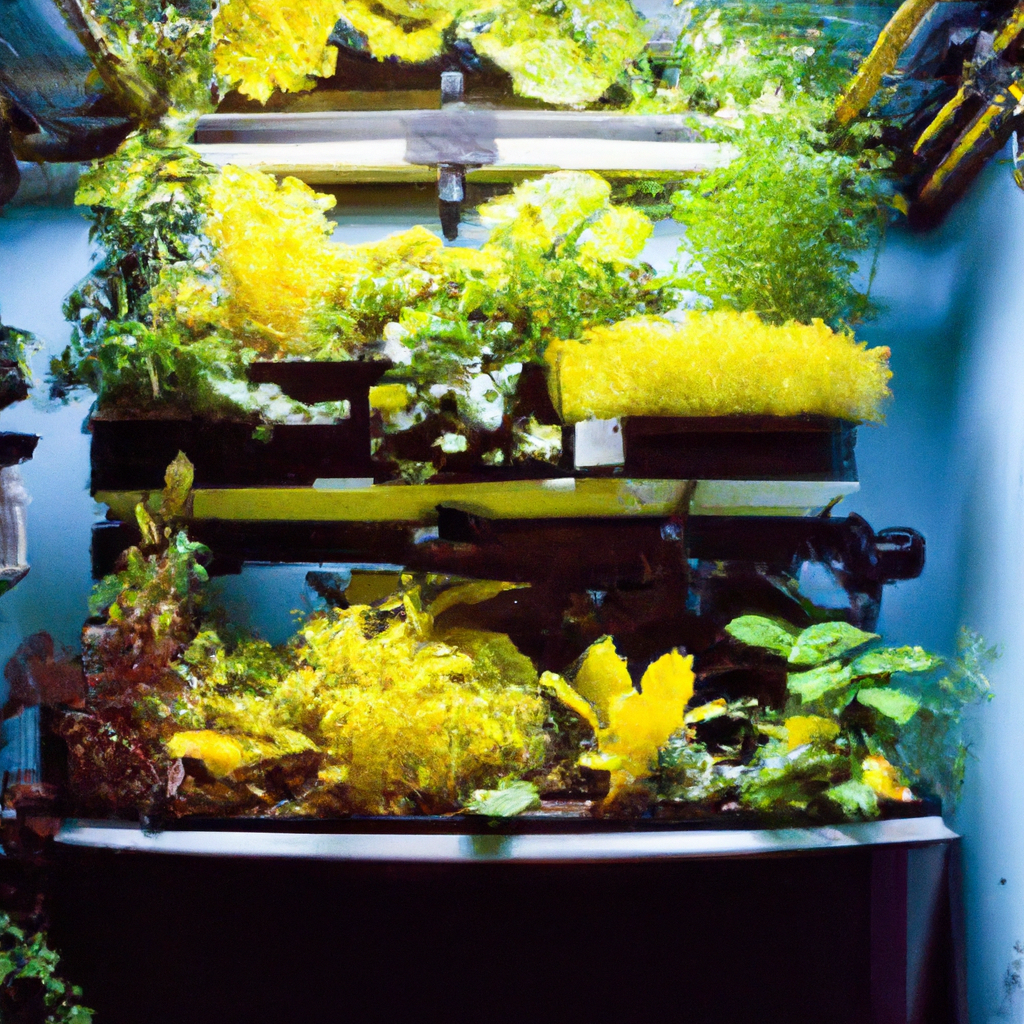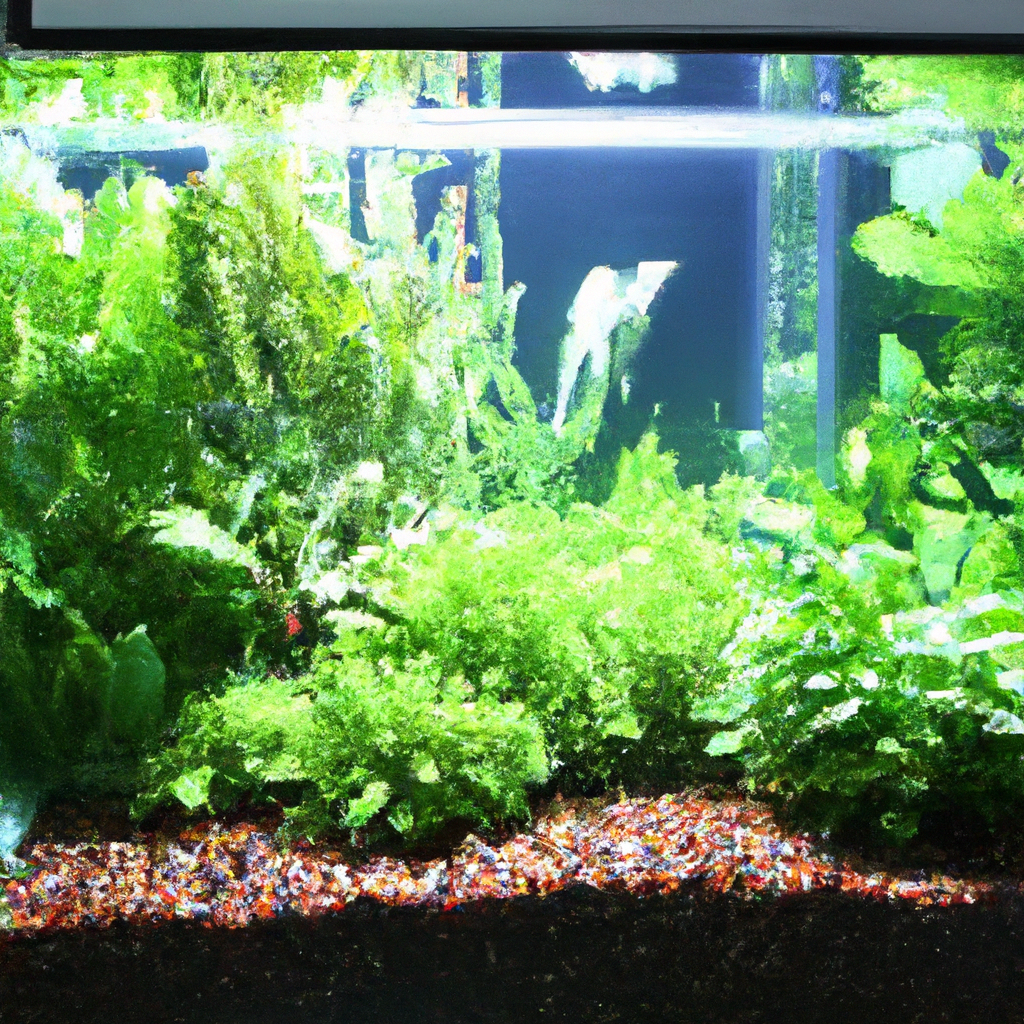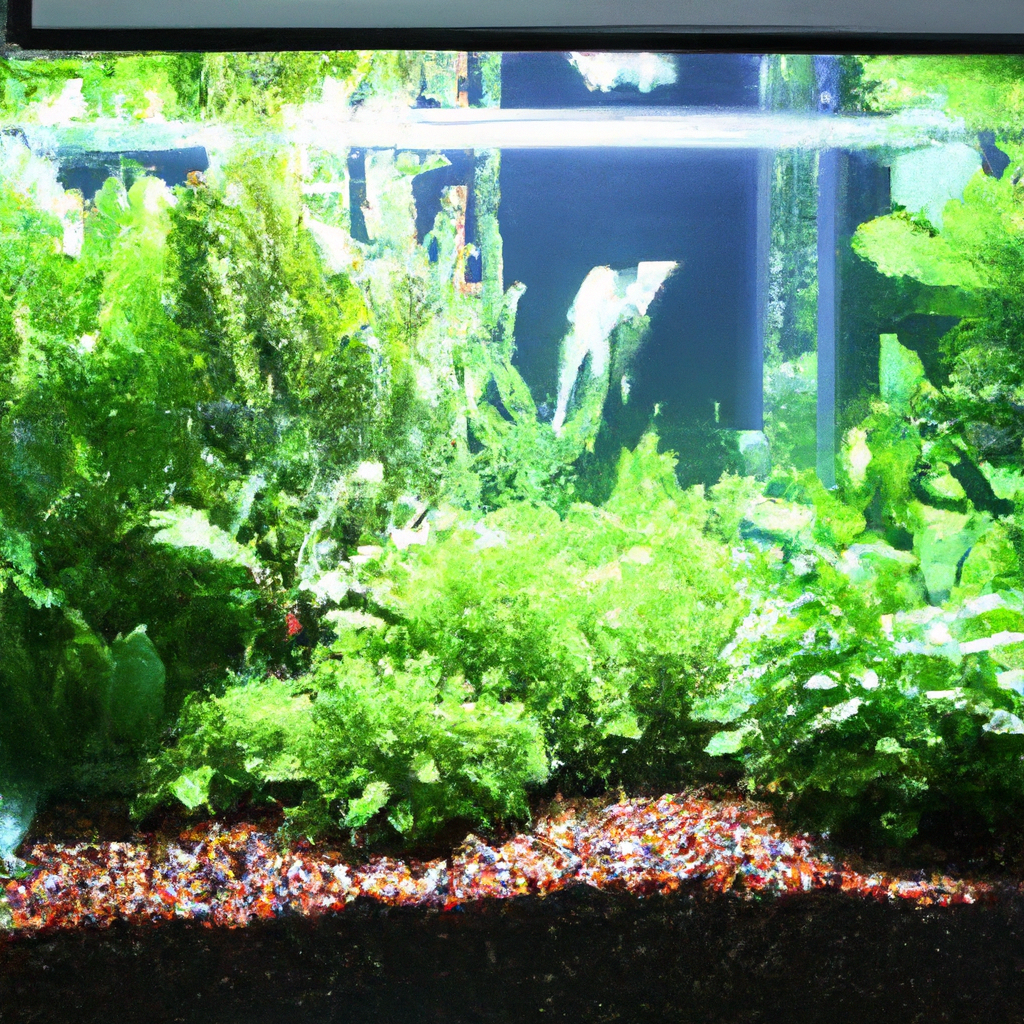Are you looking to bring the beauty and serenity of nature into your home? Look no further than setting up your very own indoor aquaponics oasis. With the fast-paced and hectic lifestyles we lead, creating a small sanctuary of peace and tranquility within your living space has never been more important. In this article, we will explore the world of indoor aquaponics and guide you through the steps of setting up your own self-sustaining ecosystem. Get ready to transform your indoor space into a thriving oasis of greenery and beauty, all while enjoying the benefits of growing your own organic food.

Choosing the Right Location
Considering Space Requirements
When choosing a location for your indoor aquaponics system, it is important to consider the space requirements. Evaluate the available space in your home and determine how much room you can dedicate to the system. Keep in mind that you will need space not only for the fish tank and grow bed, but also for the water circulation system and other equipment. Ensure that you have enough space to comfortably set up and maintain the system without it taking over your living area.
Evaluating Light Availability
Another crucial factor to consider when choosing a location for your indoor aquaponics system is light availability. Plants require sufficient light to photosynthesize and grow. Assess the natural light sources in the room where you plan to set up the system. Consider aspects such as windows, skylights, and artificial lighting options. Ideally, your aquaponics setup should receive at least six hours of direct or indirect sunlight per day. If natural light is limited, you may need to supplement it with grow lights to ensure healthy plant growth.
Ensuring Proper Temperature Control
Temperature control is vital for the success of your indoor aquaponics system. Both fish and plants have specific temperature requirements for optimal growth and health. Ensure that the location you choose allows for proper temperature regulation. Avoid placing the system near drafty windows or in areas that experience extreme temperature fluctuations. Consider using a thermometer or a temperature control system to maintain a stable and suitable environment for your aquatic life and plants.
Selecting the Aquaponics System
Understanding Different System Types
Before you dive into setting up your indoor aquaponics oasis, it’s essential to understand the different types of aquaponics systems available. The most common types include media-based, raft, and nutrient film technique (NFT) systems. Media-based systems use a solid medium, such as gravel or clay pellets, to support plant roots. Raft systems involve floating plants on top of a nutrient-rich water solution. NFT systems circulate a thin film of water over plant roots, providing them with nutrients. Each system has its own advantages and considerations, so research and choose the one that best suits your preferences and resources.
Assessing System Size
The size of your aquaponics system will depend on various factors, including the available space, the amount of fish and plants you wish to grow, and your personal goals. Consider the number of fish you want to rear and the amount of produce you want to harvest. Remember, larger systems generally require more maintenance and may come with higher costs. Start with a size that is manageable for you and can still yield enough food to meet your needs. You can always expand your system as you gain experience and confidence.
Researching Equipment and Supplies
To set up your aquaponics system, you will need several essential pieces of equipment and supplies. Research and purchase a high-quality fish tank that suits the size of your system. Look for a filtration system capable of efficiently removing waste and maintaining water quality. You will also need grow beds or trays, appropriate planting media, and pumps for water circulation. Additionally, consider other supplies such as air pumps, heaters, and testing kits for monitoring water quality. Take the time to gather all the necessary equipment and supplies before starting your aquaponics journey.

Choosing the Right Fish
Researching Aquaponics-Friendly Fish
Selecting the right fish for your indoor aquaponics system is crucial for its overall success. Some common aquaponics-friendly fish include tilapia, trout, catfish, and perch. These fish species can thrive in an aquaponics environment and provide excellent nutrient-rich waste for your plants. Research each fish species, taking into consideration their dietary needs, temperature requirements, and compatibility with other aquatic life. Remember that different fish have different environmental preferences, so choose fish that are suitable for your desired water temperature and pH levels.
Considering Factors such as Temperature and Water Quality
When choosing fish for your aquaponics system, consider their temperature and water quality requirements. Ensure that the fish you select can tolerate the temperature range of the system’s location. Additionally, assess the water quality parameters such as pH, ammonia, and nitrate levels that the fish species can tolerate. Keep in mind that maintaining stable water conditions is crucial for the health and well-being of your aquatic companions.
Selecting Fish with Sustainable Growth Rates
To ensure a thriving aquaponics system, it is advisable to select fish with sustainable growth rates. Some fish species grow faster than others, which means you can harvest them sooner and potentially increase your overall yield. Tilapia, for example, is known for its rapid growth and ease of cultivation. However, keep in mind that fast-growing fish may also require more resources and produce more waste. Consider the balance between growth rate and resource requirements when choosing fish for your system.
Selecting the Right Plants
Identifying Ideal Plants for Aquaponics
Selecting the right plants for your indoor aquaponics system is crucial for achieving a balanced and sustainable ecosystem. Many plants thrive in aquaponics, including leafy greens like lettuce and herbs like basil. Consider the plants’ growth habits, nutrient requirements, and compatibility with the aquatic environment. Choose plants that are suitable for the space you have available and that you enjoy consuming. Experiment with different plant varieties to diversify your produce and enhance the visual appeal of your oasis.
Considering Nutrient and Light Requirements
Plants in aquaponics receive their nutrients from the waste generated by the fish. However, different plants have varying nutrient requirements. When selecting plants for your system, consider their specific needs and match them with the nutrient availability in your aquaponics setup. Additionally, evaluate the light requirements of the selected plants. Some plants thrive in low-light conditions, while others require more intense light. Ensure that your system’s location and lighting setup can meet the plants’ needs for healthy growth and productivity.
Choosing Plants with Compatible Growth Rates
To maintain a harmonious and efficient aquaponics system, choose plants with compatible growth rates. Some plants grow faster than others, and planting them together can lead to overcrowding and competition for nutrients. On the other hand, combining plants with contrasting growth rates can result in unbalanced nutrient uptake. Aim for a mix of fast-growing, moderate-growing, and slow-growing plants to achieve a diverse and sustainable ecosystem. Regularly monitor and adjust your plant selection as needed to maintain a healthy balance in your aquaponics system.

Setting Up the Fish Tank
Determining Tank Size and Shape
When setting up your fish tank, the size and shape of the tank are important considerations. The tank should be large enough to accommodate the number of fish you plan to rear and provide sufficient swimming space. Consider the adult size of the fish species you have selected and their aquaponics-friendly preferences. Remember, a crowded tank can lead to increased stress and disease susceptibility among the fish. Choose a tank with a suitable shape that allows easy access for maintenance and cleaning.
Installing a Filtration System
A reliable and efficient filtration system is vital for maintaining good water quality in your fish tank. A robust filtration system will remove waste, excess nutrients, and harmful substances from the water, promoting a healthy environment for your fish. Research and select a filtration system suitable for your tank size and fish load. Consider options such as mechanical filtration to remove solid waste, biological filtration to convert harmful ammonia into less toxic nitrates, and chemical filtration to further refine the water quality.
Adding Substrate and Decorations
Once you have set up your fish tank, consider adding substrate and decorations to enhance the aesthetics and provide a stimulating environment for your fish. Choose a suitable substrate, such as aquarium gravel or sand, that is easy to clean and does not leach harmful substances into the water. Decorations like driftwood, rocks, and artificial plants can provide hiding spots and create a natural-looking habitat for your fish. Ensure that the materials you choose are safe for both fish and plants in your aquaponics system.
Setting Up the Grow Bed
Choosing the Appropriate Grow Bed Size and Material
When setting up your grow bed, consider the appropriate size and material for optimal plant growth. The size of the grow bed will depend on factors such as the available space, the number and size of the plants you plan to cultivate. Ensure that the grow bed is deep enough to allow plant roots to establish and grow. Common materials for grow beds include plastic containers, wooden crates, or specially designed aquaponics grow beds. Select a material that is food-safe, durable, and easy to clean.
Adding a Grow Media
A critical component of your aquaponics grow bed is the grow media. The grow media provides support for plant roots, facilitates water flow, and helps maintain a balanced ecosystem. Common types of grow media include expanded clay pellets, coconut coir, and lava rock. Choose a grow media that suits your plant selection and system requirements. Ensure that the media is lightweight, pH-neutral, and allows ample oxygenation and water retention for healthy root growth.
Setting Up a Bell Siphon System
To ensure efficient water cycling in your grow bed, consider setting up a bell siphon system. A bell siphon operates by creating a vacuum that drains the water from the grow bed and then allows it to refill. The intermittent flooding and draining action helps oxygenate the root zone and prevents waterlogging. Research and follow a reliable guide to set up a bell siphon suitable for your grow bed size and water flow rate. Regularly monitor and maintain the bell siphon system to ensure it functions optimally.

Establishing the Water Circulation System
Installing a Water Pump
A water pump is a crucial component of your aquaponics system and is responsible for circulating water through the system. Select a water pump that is suitable for the size of your system and flow rate requirements. Consider factors such as energy efficiency, noise levels, and ease of maintenance when choosing a water pump. Properly install the pump to ensure optimal water circulation and prevent any blockages or malfunctions.
Setting Up Pipes and Valves
Pipes and valves are essential for directing water flow and controlling the water level in your aquaponics system. Use appropriately sized pipes and fittings to connect the various components, such as the fish tank, grow bed, and filtration system. Install valves that allow convenient adjustment of water flow rates and levels. Pay attention to the layout and positioning of the pipes to ensure optimal functionality and ease of maintenance.
Ensuring Proper Water Flow and Oxygenation
To maintain a healthy aquaponics system, it is crucial to ensure proper water flow and oxygenation. Design your system to promote good water circulation and prevent stagnant areas where waste can accumulate. Consider adding aeration devices, such as air stones or diffusers, to enhance oxygen levels in the system. Regularly monitor water flow and oxygen levels to ensure they meet the requirements of both the fish and the plants.
Introducing the Fish and Plants
Cycling the System
Before adding fish and plants to your aquaponics system, it is essential to cycle the system. Cycling involves establishing beneficial bacteria colonies in the grow bed and filtration system to convert toxic ammonia into less harmful nitrate. To cycle your system, add a source of ammonia, such as fish food, and monitor the water parameters until the cycle completes. This process may take several weeks, so be patient and avoid adding fish or plants until the cycling is complete.
Adding Fish to the Tank
Once your system has cycled, it is time to introduce fish into the tank. Slowly acclimate the fish to the water temperature and quality to minimize stress. Monitor the fish closely during the first few days to ensure they are adapting well to their new environment. Remember to feed the fish regularly and maintain appropriate water conditions to support their health and growth.
Planting Seeds or Seedlings in the Grow Bed
With the fish settled in their tank, it’s time to plant seeds or transplant seedlings into the grow bed. Prepare the planting sites in the grow media and carefully place the seeds or seedlings. Ensure proper spacing to prevent overcrowding and allow each plant to receive sufficient nutrients and light. Gently cover the roots with the grow media, taking care not to damage the delicate plants. Provide appropriate support, such as plant stakes or trellis, as needed. Monitor the plants’ growth and make adjustments as necessary to optimize their development.

Monitoring Water Quality
Checking pH Levels Regularly
Regular monitoring of pH levels is crucial for maintaining optimal water quality in your aquaponics system. A stable pH range is important for fish health and nutrient absorption by plants. Use a pH testing kit or digital meter to monitor the pH regularly. Adjust the pH levels as needed by adding pH up or down solutions or using natural methods such as adding crushed eggshells or vinegar. Aim for a pH range suitable for both the fish and the plants in your system.
Monitoring Ammonia and Nitrate Levels
Ammonia and nitrate levels are key indicators of water quality in your aquaponics system. Monitor these parameters regularly, especially during the initial cycling phase and throughout the system’s operation. Test kits are available to measure ammonia and nitrate levels accurately. High ammonia levels can be harmful to fish, while excessive nitrate levels can lead to reduced plant growth. Take appropriate actions, such as partial water changes or adjusting the fish feeding rates, to maintain safe ammonia and nitrate levels.
Maintaining Proper Oxygen Levels
Proper oxygen levels are vital for the health of both fish and plants in your aquaponics system. Insufficient oxygen can lead to stress, lower growth rates, and increased susceptibility to diseases. Regularly monitor the oxygen levels to ensure they remain within the appropriate range for your aquatic life. Aeration devices, such as air stones or diffusers, can help increase oxygenation in the system. Maintain a healthy oxygen balance by promoting good water circulation and avoiding overstocking the fish tank.
Maintaining the Aquaponics System
Feeding the Fish Regularly
Regular and appropriate feeding of the fish is essential for their well-being and growth. Follow the feeding guidelines specific to the fish species you have selected. Overfeeding can lead to poor water quality, while underfeeding can affect fish health and growth. Monitor the fish’s feeding behavior and adjust the feeding amounts accordingly. Remember to feed a balanced diet to ensure that the fish receive the necessary nutrients for optimal growth and nutrient production for your plants.
Pruning and Harvesting Plants
As your plants grow, regular pruning becomes necessary to maintain their health and productivity. Remove dead or damaged leaves and stems to prevent disease spread and promote healthy growth. Harvest mature plants regularly to encourage new growth and ensure continuous production. Use clean and sharp gardening tools to avoid damaging the plants. Additionally, monitor the overall development of the plants and adjust their positioning or support systems as needed.
Preventing and Managing Pest Infestations
Pest infestations can be detrimental to the health and productivity of your aquaponics system. Implement preventive measures such as regular cleaning, proper water quality control, and maintaining good plant health to minimize the risk of infestations. Monitor the plants closely for signs of pests and take immediate action if detected. Utilize organic pest control methods such as introducing beneficial insects, applying neem oil, or using homemade insecticidal soaps. Maintain a proactive approach to pest management to protect both your fish and plants.

